On View
Hidden in a Wall for Centuries by a Persecuted Jewish Family, the Mysterious Colmar Treasure Dazzles at the Met Cloisters
The hoard of coins and jewelry bears witness to the history of oppression the Jews experienced in medieval Europe.
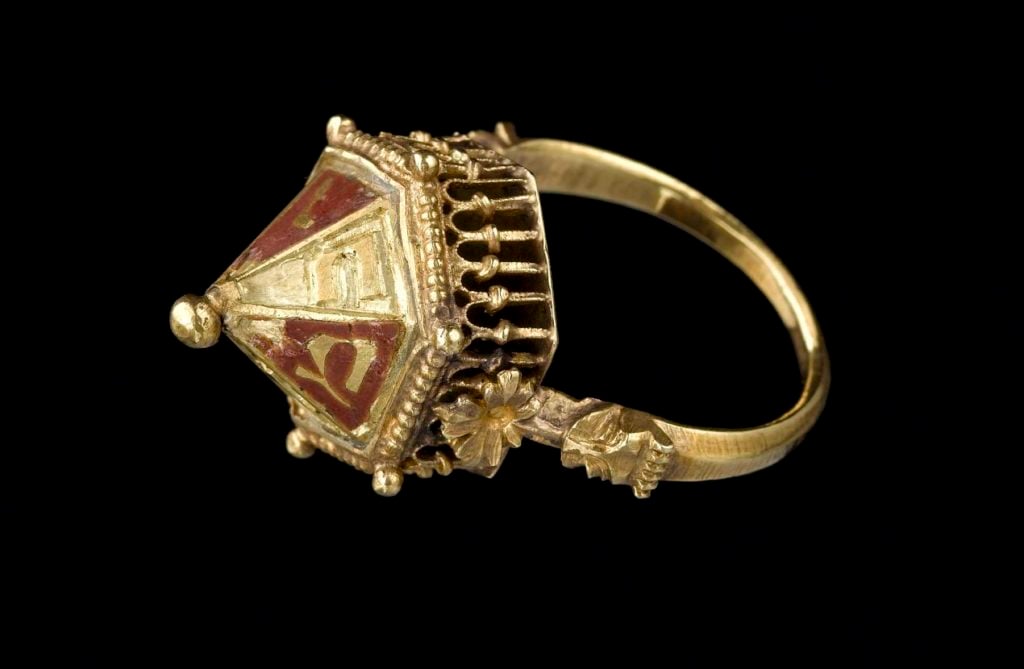
The hoard of coins and jewelry bears witness to the history of oppression the Jews experienced in medieval Europe.

Sarah Cascone

The Colmar Treasure speaks to a tragic history—a tale of love, riches, discrimination, and mass murder in Medieval Europe. Hidden for 500 years, it was discovered concealed behind a wall in the 19th century, and the secrets of the hoard of coins and jewelry were only gradually pieced together.
The treasure is now on show at the Cloisters at New York’s Metropolitan Museum of Art, in a loan exhibition from the Musée de Cluny in Paris, currently closed for renovations until spring 2021. It offers a rare glimpse into the once thriving Jewish community of Colmar in Alsace, a province in the east of France, during the age of the Holy Roman Empire.
The origins of the Colmar Treasure are shrouded in mystery. It was discovered in 1863, during the renovation of a building housing a confectionary business. When workers damaged a retaining wall, they uncovered a terracotta pot filled with gold and jewels stashed beneath a layer of crumbling mortar. There were no letters or documents to accompany the 384 silver coins, the 14 gold and gilded silver rings set with colored glass and precious stones, and the other assorted items that had been concealed for so many centuries. Who owned these treasures? Why were they hidden?
For years, little was written about this incredible find. But decades later, after much of the treasure was purchased by the Musée de Cluny, historians found an important clue. One of the rings, a marvel of gold and colored enamel, features the Hebrew letters for “mazel tov,” which means “congratulations.” The presence of this Jewish ceremonial wedding ring, shaped like the lost temple of Jerusalem, clearly identified the treasure as belonging to a Jewish family.
“The ring is so beautiful, so refined,” the exhibition and Met Cloister’s senior curator Barbara Drake Boehm told the Times of Israel. “The delicacy of the goldsmithing is extraordinary. The roof over the base of the ring is done like an open, delicate architectural arcade, with capitals and columns holding up the domed roof.”
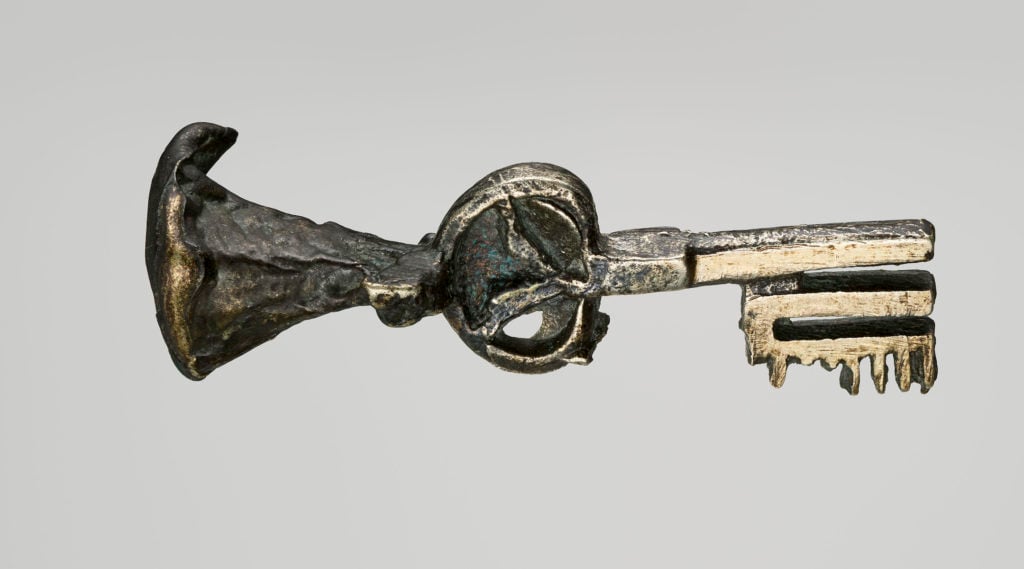
A silver key from the Colmar Treasure (first half of the 14th century). A Jewish woman could have worn this silver key as jewelry, allowing her to carry it on the Sabbath after locking all the other house keys in a box. Photo courtesy of the Musée de Cluny – Musée national du Moyen Âge, RMN-Grand Palais/Art Resource, New York.
Upon closer examination of the rest of the hoard, there were other clues as well. A small key was probably a clever solution to the scriptural prohibition against carrying objects on the Sabbath. Because it was made of silver, it was technically a piece of jewelry, and a woman could wear it around her neck upon leaving the house, after locking up all of the family’s other keys in a special box.
A rare onyx ring features the Latin inscription “Avdi, vidi,” which means “I heard, I see,” probably a reference to a Jewish superstition that the gemstone allowed communication with dead loved ones through dreams. And a single gold florin amid the smaller coins was likely intended to pay the annual tax that required wealthy Jews give the emperor a gold florin each year.
Today, there is almost no evidence that Jews once lived in medieval Colmar; the synagogue and other religious buildings have long-since disappeared. As the plague ravaged medieval Europe, the Jews were viewed with suspicion and often blamed for the devastating illness. Between 1348 and 1351, it is estimated that over half of the Jewish population of the Holy Roman Empire died, either from persecution, or the plague itself.
“Museums today face a particularly daunting challenge in giving adequate voice to the cultural heritage of the medieval Jewish population,” writes the Met director’s, Max Hollein, and the director of the Musée de Cluny, Élisabeth Taburet-Delahaye, in the forward to museums’ joint publication accompanying the exhibition.
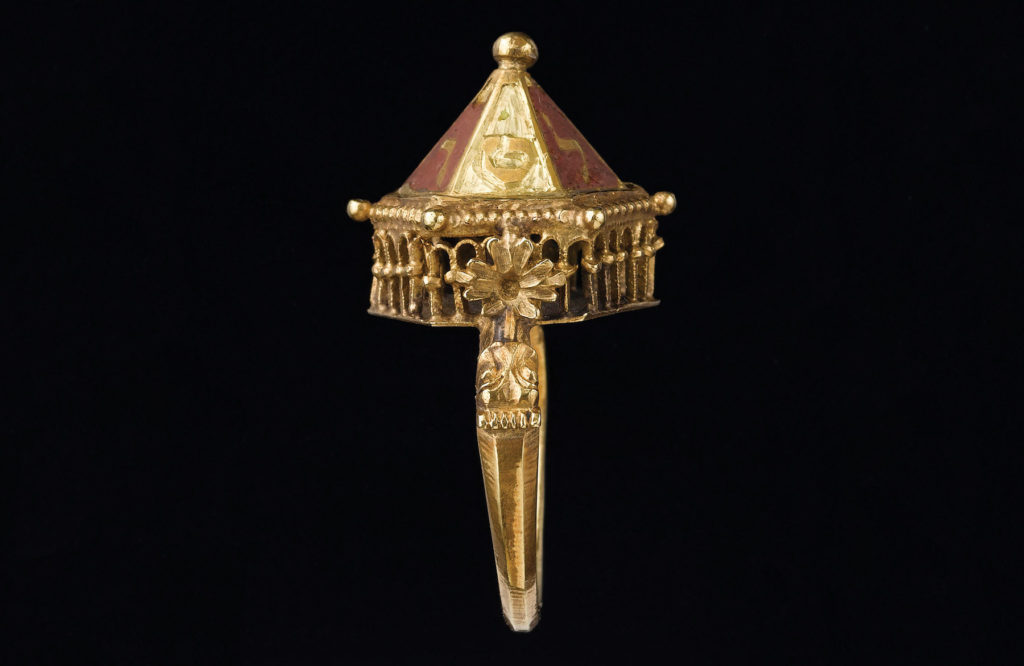
Jewish ceremonial wedding ring from the Colmar Treasure (around 1300). The Hebrew letters spell “mavel tov,” or “congratulations.” Photo by Jean-Gilles Berizzi, courtesy of the Réunion des Musées Nationaux.
In Colmar, the historical record is patchy, but it is known that a Jewish man arrested on December 27, 1348, confessed, under torture, to poisoning the town’s water supply. In January, the town’s Jews were put to death, likely burned alive in a place later known as the “Pit” or the “Grave of the Jews.” Black Death pogroms were repeated across the region.
Towns confiscated the property of their dead Jewish citizens, and the Holy Roman Emperor Charles IV pardoned his subjects for the murders, provided he could seize a portion of the victims’ assets. The Colmar Treasure was presumably buried by a Jewish family before they were killed in the massace, and serves as a reminder of the murderous violence of that dark period.
“Colmar’s treasure is tinged with tragedy,” admitted Hollein and Taburet-Delahaye. But that only serves to emphasize, they added, the importance of its legacy as “exceptional witness to Jewish life in the Rhineland in the 14th century.”
See more pieces from the Colmar Treasure below.
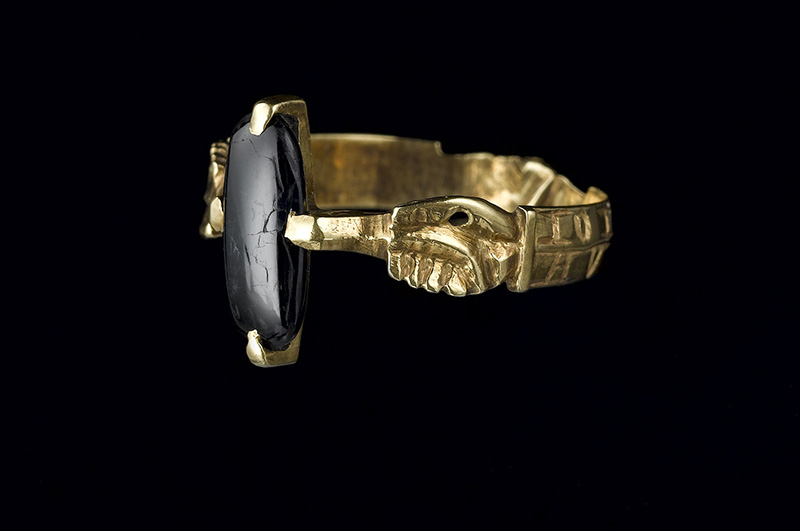
Onyx ring from the Colmar Treasure (between 1250 and the early 1300s), from the collection of the Musée de Cluny–Musée National du Moyen Âge. Photo ©RMN-Grand Palais/Art Resource, New York.
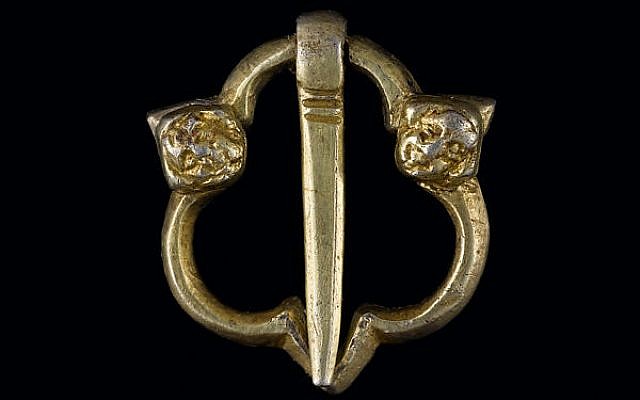
A dress pin decorated with faces, from the Colmar Treasure (second quarter of the 14th century). Photo courtesy of the Musée de Cluny – Musée national du Moyen Âge/Metropolitan Museum of Art)
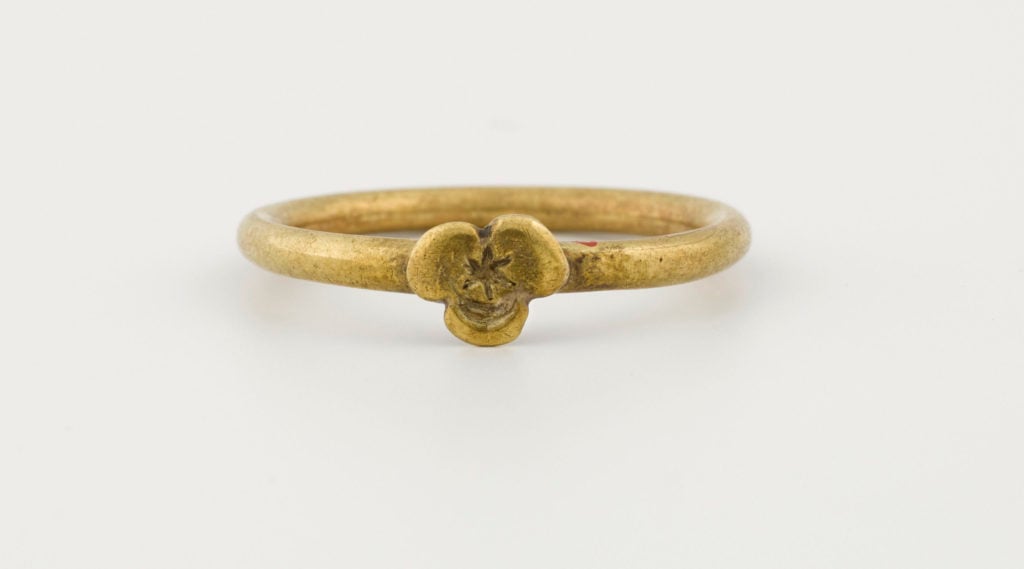
Star and crescent ring from the Colmar Treasure (between 1200 and 1350), from the collection of the Musée de Cluny–Musée National du Moyen Âge. Photo ©RMN-Grand Palais/Art Resource, New York.
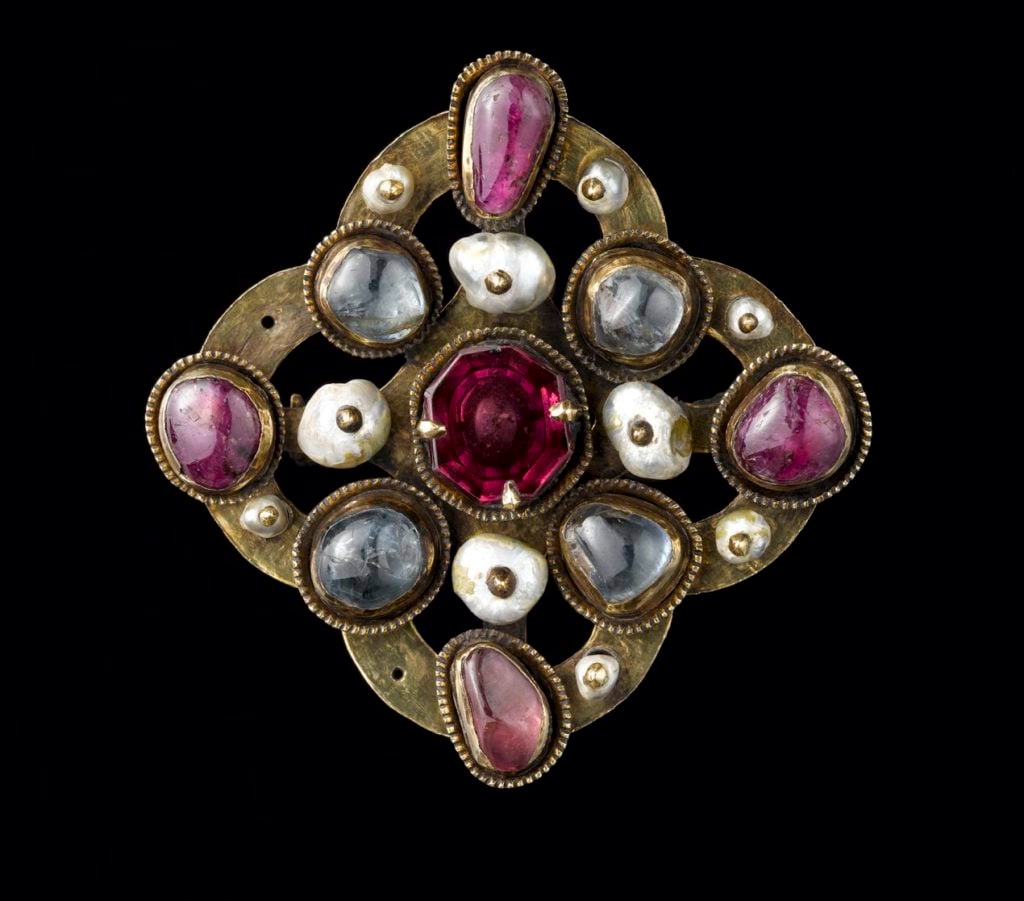
Jeweled Brooch from the Colmar Treasure (second quarter 14th century). Photo courtesy of the musée national du Moyen Âge – Thermes de Cluny, Paris.
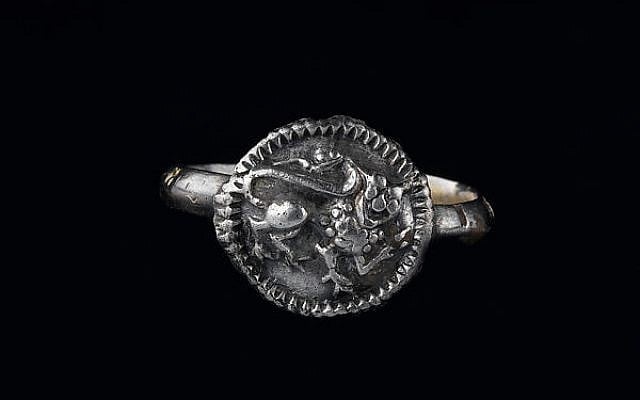
A ring with a snarling leopard or lion from the Colmar Treasure (circa 13th century). The ring is inscribed “A MON AMI,” suggesting it was a gift to a friend. Photo courtesy of the Musée de Cluny – Musée national du Moyen Âge/Metropolitan Museum of Art.
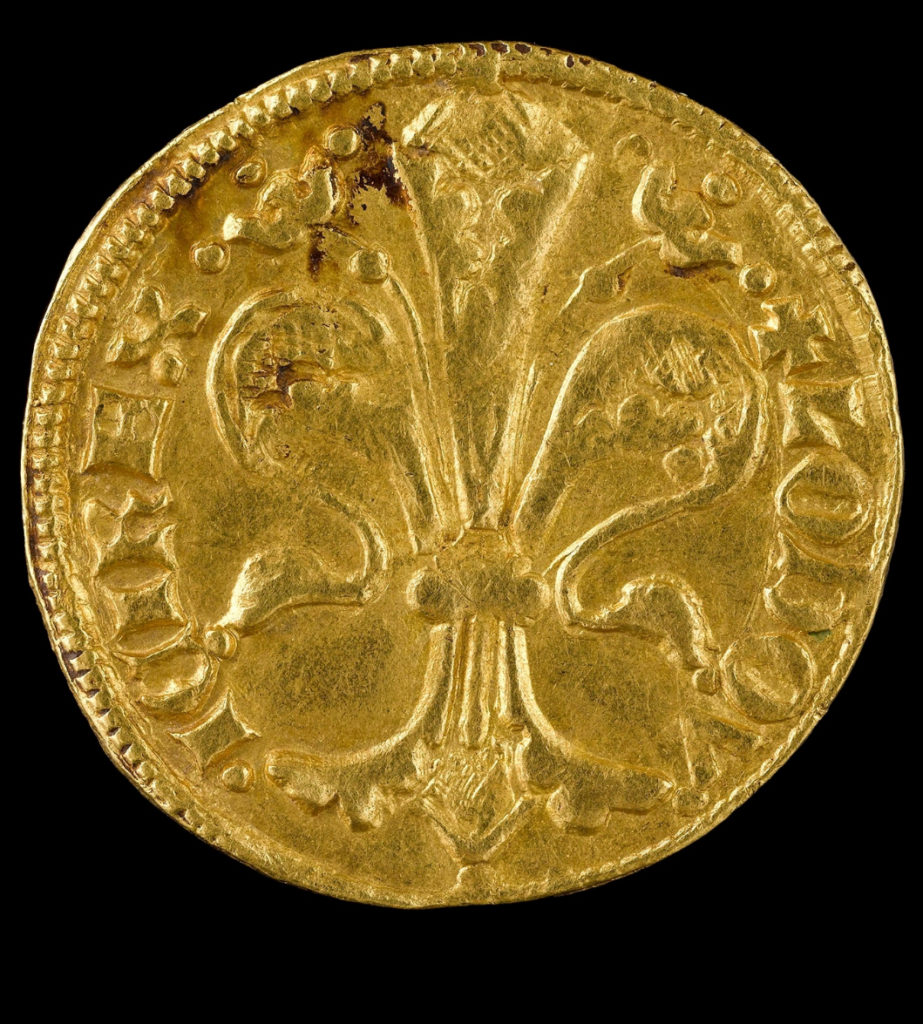
At left, a gold florin of Louis of Hungary from the Colmar Treasure (1342-53). Jewish families with more than 20 florins to their name had to pay a gold florin as an annual tax to the Holy Roman Empire. Photo courtesy of the Musée de Cluny – Musée national du Moyen Âge, RMN-Grand Palais/Art Resource, New York.
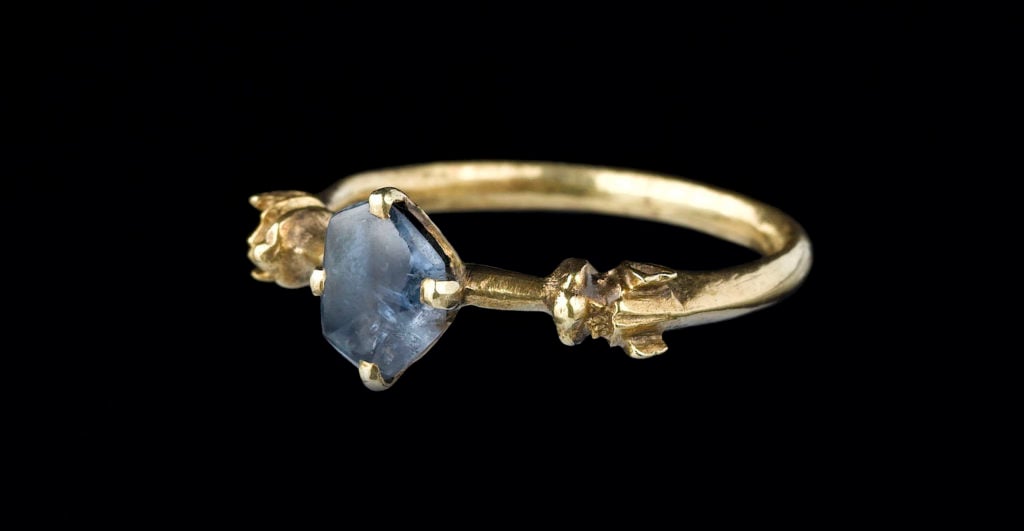
Sapphire ring from the Colmar Treasure (circa 1325–50), from the collection of the Musée de Cluny–Musée National du Moyen Âge. Photo ©RMN-Grand Palais/Art Resource, New York.
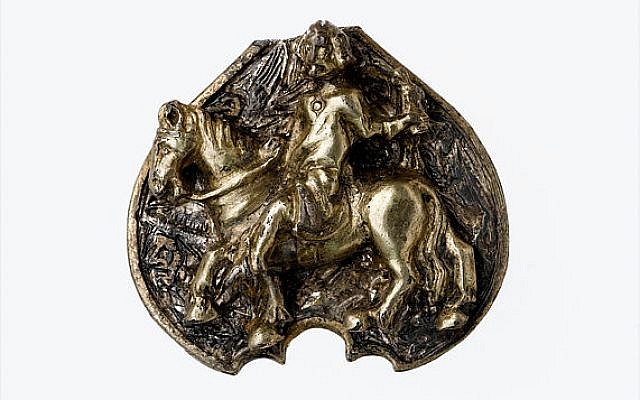
A fastener decorated with a falconer on horseback from the Colmar Treasure (first quarter of the 14th century). Photo courtesy of the Musée de Cluny – Musée national du Moyen Âge/Metropolitan Museum of Art.
“The Colmar Treasure: A Medieval Jewish Legacy” is on view at the Cloisters, the Metropolitan Museum of Art, 99 Margaret Corbin Drive, New York, July 22, 2019–January 12, 2020.